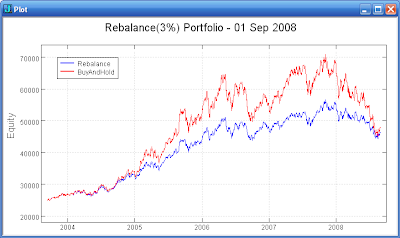


The market broke down today and the Telechart T2108 indicator is below 10%. The T2108 indicator shows the percentage of stocks above their 40 day moving average. When it is below 20% it tends to mark buying opportunities. Take a look at the plots above. The red lines indicate when the T2108 indicator was less than 10%. These times have mostly been good times to buy for the intermediate to long term. The first plot shows data back to the crash of 1987 and the second plot shows just the last several years. Since the market began to top out in mid 2007, this is the third time that T2108 has been less than 10%. Are we nearing a bottom as in 2002 or 1987? In any case it looks like a rough ride for at least a few months.





















